First drive: 2013 Hyundai Veloster GDI at Hyundai Global Club Invitation in South Korea

Let me start off by saying that I was missing in South Korea for the past one week, not for a test-drive event, but to be part of a new programme by Hyundai, dubbed the Hyundai Global Club Invitation. It’s an event that involved flying in around 35 people from 14 countries who contributed to the cause of promoting Hyundai, mostly by starting local Hyundai clubs and such, while a handful of “bloggers” were along for the ride. Somehow I was representing the UAE there, although I didn’t know that when I agreed to go for this trip. Between the long flights and 4 days of touring Hyundai’s facilities as well as South Korea itself, we did get a brief run with a 2013 Hyundai Veloster GDI, a car that’s very similar to what’s offered in the GCC, but with a slightly nicer engine.
We were initially put up at the Conrad Seoul, a year-old hotel so fancy that the bathtub had remote-controlled settings and the toilet had more electronic features than any car, the latter seemingly having become common since the last time we were in Korea for the Hyundai Elantra media drive.

The next day involved a visit to the Hyundai-Kia HQ, a two-tower building with a fancy lobby showing off a few of their top models, such as the Centennial and the Grand Santa Fe. After a welcome presentation, we were back in the lobby for a brief look at a full-size cutaway model of a hydrogen-powered version of the Hyundai Tucson, a car that is actually going on sale in Europe soon. Boasting roughly the same performance a 2.0-litre petrol model, we weren’t aware earlier that Hyundai had a hydrogen-powered production car ready for the public, what with companies like Honda and BMW hogging the limelight with their experimental hydrogen cars just a few years ago.
Next stop was the Hyundai-Kia R&D centre in Namyang, about an hour’s drive out of the capital. We’ve been here before, and it’s where all the new models are developed from sketches to prototypes. They’ve got their own wind tunnel, high-speed test track, various surfaces to test ride quality, electronic-interference test dome, weather simulators and more. They also have several hundred cars from rivals from every possible brand crammed into a single parking lot. They particularly have a fondness for VWs and Toyotas, as we saw the upcoming facelifted Sonata being driven alongside the Passat and the Camry. The prototypes were all camouflaged though, as were a new minivan model, a facelifted Azera and a larger next-gen Genesis sedan that were running around. Sadly, cameras weren’t allowed in.
An interesting fact is that while the mechanicals for the Hyundai-Kia cars are developed by one team, the final body and interior designs are worked on by separate teams in different buildings, and these teams strictly stay away from each other as they compete with their own styles and marketing. And that’s why Hyundai and Kia cars look completely different, unlike General Motors who just slap different badges on duplicate cars.

There was a tour of a mini-museum at the R&D centre too, where all their past undesirable cars were proudly displayed, including the 1975 Hyundai Pony. It was an interesting look at how far the underdog company had come.
After that, we were transported to their Asan factory, which builds the Sonata and the Azera. This being my first factory tour in nine years being in this business, the Hyundai facility did not disappoint. We first walked around the building that houses the body shop, where the steel bodies are stamped, welded and put together. Amazingly, there were hardly any people there, appearing almost abandoned as the processes were 70% automated. Wheeled robots were dragging piles of neatly-organised metal panels where they needed to be, while uber-precise robotic arms were doing the stamping and the welding. It was like being in a surreal sci-fi movie, even after seeing this stuff in videos before.

We skipped over the paintshop for fear of contamination and headed straight to the place where the car’s interior, exterior trim and electronics were fitted. There’s a slow-motion train of partially-built car bodies going around the building over several floors like some sort of complicated indoor theme-park ride, eventually ending up on the ground floor in a straight-moving assembly line where humans finally stick on all the interior panels, wire all the electronics, and stick on all the exterior trim, with a quick final check done by a bunch of men who finally drive it out to a small test track to give each car a brief road test.
You’d think there are separate lines for the Sonata and the Azera, but both cars are built on the same lines, seemingly done at random, but in reality, a mega computer is keeping track of everything, down to the box of parts that a worker receives down the line to install on a specific car. Several variants are thrown into the same assembly line as well. We saw Azeras, basic and top-spec Sonatas, Sonata Hybrids and CNG variants, and even a few previous-gen fleet-spec Sonatas, all being built on the same assembly line. The amount of computer-controlled automation is tremendous. No wonder their build quality rivals the Japanese nowadays. The clean factory even seems to be designed for tour groups like ours to safely walk around in, and in some parts we were even able to touch the cars are they rolled down the line. They were churning out one car every 45 seconds by our count. This one factory builds 1,200 cars per day, and Hyundai has several more plants in Korea and around the world.

With that in our minds, the next day we went on a tour of one of the former emperor’s palaces before being flown to Jeju Island for the final leg of this trip. We were put up at the Haevichi resort, and the next morning, we had a little yacht trip before finally getting behind the wheel of a car. Out of the choices, the Hyundai Veloster was the most interesting. The one we drove had the 1.6-litre “GDI” direct-injection engine, which simply has 10 hp more and slightly better fuel economy than the 128 hp GCC-spec car we drove in Dubai.
Driving around the medium-speed streets of the stunning volcano-formed Jeju Island, the Veloster didn’t seem any quicker than the GCC-spec model that lacks direct-injection tech. It still has a short first gear and a buzzy demeanour, so it’s spritely enough for city driving, but runs out of breath on full-throttle sprints to reach highway speeds.

I’d forgotten how well the ride-handling balance on the Veloster is, and was reminded of how it’d make a good base for a hot hatch. It’s got steering feedback and linear brake-pedal feel too. The only things missing are sharpness in the former and strength in the latter. Soon, the Turbo version will apparently be hitting UAE streets in the coming months, so the power issue will be taken care of, hopefully with the requisite improvements to the steering and brakes as well.
Getting back to the naturally-aspirated GDI car we drove, it’s hard to feel 10 extra horses, but the fuel economy improvement was obvious. We were doing at indicated 7.9 litres/100 km in city driving, which is a heck of a lot better than the non-GDI car, although the pleasant weather in Korea may have also played a part. We also drove in Eco mode half the time, which noticeably made the normally-perfect gear-changes excruciatingly tuned towards economy, but it did what it’s meant to do.

Our test car also had 48,000 km on the clock, as it’s apparently used as a rental. The car had held up well, with only a minor occasional rattle in the dash and a visually-worn steering-wheel rim, so that bodes fairly well for durability. We’ve already covered everything else on the Hyundai Veloster.
As we ended the day with a farewell dinner and a tour of downtown Seoul before the flight back, I realised what a fanatic bunch those Hyundai club guys were. There was one near-retirement American who’s only owned Hyundais since the mid-90s. Then there was the German who privately imported a Genesis Coupe because it wasn’t officially offered, in a country that produces BMWs and Porsches. From our region, there was an Omani who bought a Veloster and started a niche club, managing to bring together more than 40 Veloster owners — a big number for our market, and enough to catch the dealer’s attention and be sent for this trip. There were others from India, Italy, Ecuador, Russia, Costa Rica, Turkey, China, Czech Republic and Brazil.
It’s interesting to see a mass-market manufacturer treat their biggest loyalists with the kind of fanfare usually reserved for press events. For them, a bunch of regular guys and girls, it was the trip of a lifetime. And Hyundai apparently plans to do something similar every year.


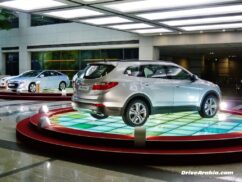

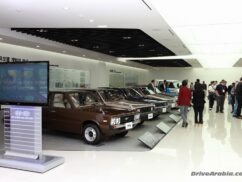
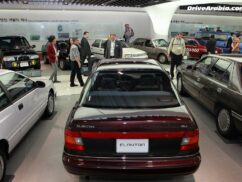

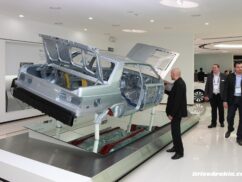
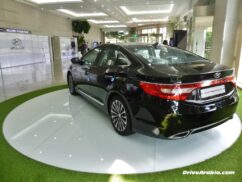
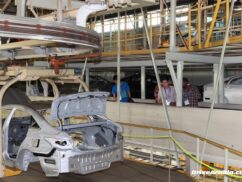

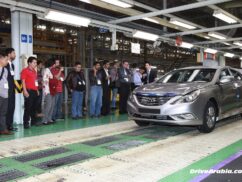






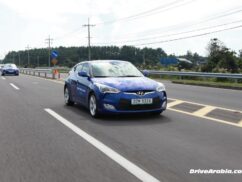
Comments
Shahzad Haider
So no test drive for Veloster turbo version…. Have to wait until it reaches UAE.
Joe
Not sure what is the point of a GDI Veloster coming here to the GCC considering that they’ll pretty much jack up the current price by 5000-10000 to offset the added cost of the GDI Engine.
The Veloster Turbo GDI is another story though.
Suraj
Slap different badges on duplicate cars as General Motors does….